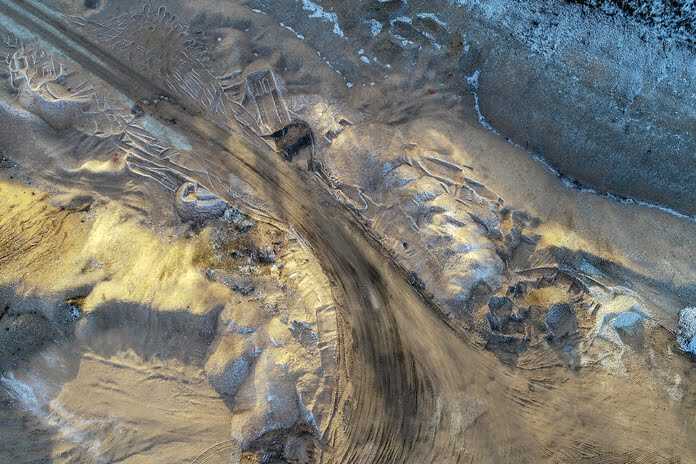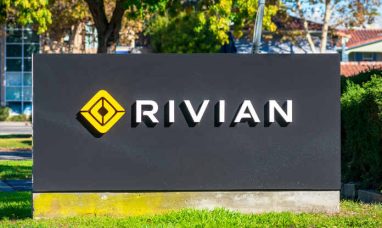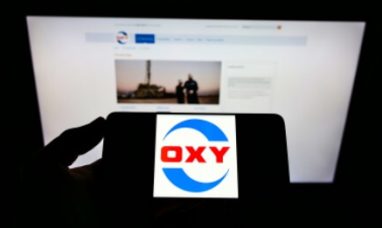The Gold Miners Index (GDX) had a mixed first-quarter earnings season, with minimal free cash flow creation, increased expenses for most producers year over year, and flat to negative revenue on balance. This was due to persistent inflationary pressures, even though the rate of change has reduced. Fortunately, Orla Mining (NYSE:ORLA) investors were pleasantly surprised with another major beat, with production tracking in line with guidance and costs falling below the low end of the range, an exceptional performance given the strength in the MXN/USD exchange rate mentioned by many of Orla’s Mexican peers. Let’s take a closer look at the results to see if the company is worth buying ahead of the second quarter.
Production and Sales in the First Quarter
Orla Mining reported Q1 results last month, showing quarterly gold production of 25,900 ounces, a 13% increase over the previous year, with production somewhat lower in Q1 2022 due to commercial production not being recorded until April 1st, 2022. This puts the business on track to fulfill its midpoint projection of 105,000 ounces this year (24.6% of the total), and while this is a very tiny production profile, Orla compensates for its current scale with outsized margins. Indeed, Orla reported the lowest all-in sustaining costs sector-wide among producers I watch, at $693/oz, despite the Mexican Peso falling 10% year on year, a headwind for a relatively high-volume miner (low-grade, heap-leach) operating entirely in Mexico.
Looking deeper into the statistics, Orla’s costs benefited from fewer waste tonnes mined as well as cheaper blasting, maintenance, and reagent expenditures during the time. Meanwhile, the increased output was due to a slightly higher processing grade (0.80 grams per tonne of gold), more tonnes crushed and stacked, and daily stacking rates that continue to exceed nameplate capacity of 18,000 tonnes per day, with stacking rates of 18,902 tonnes in Q1 2023. Orla now has a 2.5 million tonne stockpile of crushed ore (114,100 tonnes) at 0.87 grams per tonne of gold and predominantly run of mine ore at 0.34 grams per tonne of gold, and the company is working to build a dome for its ore stockpile to improve dust control, as part of its $6.0 million in planned sustaining capital this year.
In terms of sales, Orla reported a flat average realized gold price of $1,888/oz for the period, while revenue jumped to $51.1 million (Q1 2022: $39.6 million) due to higher amounts sold. This enabled the company to end the quarter with $83.8 million in cash and only $56.6 million in net debt, an enviable position for a company that only recently began commercial production. In fact, despite reporting commercial production in 2020, some companies, such as major Yukon producer Victoria Gold (OTCPK:VITFF), have scarcely made a dent in their net debt balances. While it is a small investment for Agnico Eagle (NYSE:AEM), the company appears to like what Orla is doing at its Camino Rojo Mine, opting to increase its investment in the company (8.9% ownership on an undiluted basis) with 4.0 million shares purchased at US$4.70 per share as part of its top-up right under the amended and restated investor rights agreement.
Finally, Orla continues to report thick intercepts from Camino Rojo Sulphides, with highlights including 22.9 meters at 4.02 grams per tonne of gold, 46.5 meters at 4.04 grams per tonne of gold, 21.0 meters at 6.12 grams per tonne of gold, and 55.5 meters at 3.08 grams per tonne of gold. These are the Malartic-like intercepts that encouraged Yamana Gold and Agnico to approve the Odyssey Underground Mine in Quebec, and the deep intercepts here, which should increase the resource while improving grades, are quite encouraging. Furthermore, from a regional standpoint, Orla continues to achieve respectable grades, implying a strong likelihood of mine life extension for Camino Rojo Oxides. For the time being, it’s difficult to wrap one’s head around potential economics, but with a growing multi-million-ounce resource base at Camino Rojo Sulphides, Orla arguably has one of the better development assets in the small-cap/mid-cap gold producer space in its portfolio, with a $1.2+ billion NPV (5%).
Costs and Margin
Moving on to costs and margins, Orla had another stellar quarter, with cash costs of $472/oz and all-in-sustaining costs [AISC] of $693/oz, both of which were more than 40% lower than the industry average. In fact, Orla’s AISC of $693/oz in Q1 was nearly 47% lower than the expected industry average of $1,310/oz, despite the company claiming some of the best AISC margins in the sector at $1,195/oz (63.3% margin). While the gold price will be a tailwind in Q2, with a quarter-to-date average price of $1,970/oz, we should see some cost normalization as the year progresses, with a pickup in waste tonnes mined during H2 and higher sustaining capital, with sustaining capital tracking at only 18% of annual guidance. As a result, with the market being forward-looking and the two strongest quarters of the year (Q1/Q2) practically past, I would expect margins to fall during Q3/Q4 unless the gold price can continue over $1,950/oz, especially considering the strength of the Mexican Peso.
It’s vital to keep things in perspective, and Orla will remain the highest-margin producer in the sector even if costs rise closer to $800/oz in H2-2023. That said, as I warned about Lundin Gold (OTCQX:LUGDF), I would be cautious about extrapolating the strong Q1 results to the rest of the year, and while other producers may see a strong H2 vs. H1, Lundin and Orla are likely to be two producers with softer results, which could lead to some underperformance. This is especially true given that they have outperformed their peer group significantly over the last 12 months, and some mean reversion would not be unusual. In conclusion, rather than chasing the stock with its strongest two quarters nearing completion, the wisest plan would be to wait for cheaper pricing into a softer second half of the year.
Finally, in terms of financial results, Orla recorded a cash flow of [-] $4.9 million in Q1 and a free cash outflow of $5.5 million, a considerable decrease from the cash flow of $20.5 million reported the previous year. However, this was due to a $26.5 million income tax payment, and while free cash flow was negative in Q1, Orla should have another good year of free cash flow generation in 2023. While up to $40 million in free cash flow in 2023 may not appear significant, it is more free cash flow than many mid-tier producers, let alone junior producers like Orla, are generating, aided by Camino Rojo’s impressive margins and the fact that the operation continues to operate at or above expectations (throughput above nameplate capacity and ore tonnes and recoveries in line with modeled assumptions).
Valuation
Orla Mining has a market valuation of $1.60 billion and an enterprise value of $1.64 billion based on 351 million fully diluted shares and a share price of $4.55. And, despite the fact that the firm has one of the highest estimated net asset values in the junior producer industry, with three important development assets (Cerro Quema, South Railroad, and CR Sulphides), I don’t see enough margin of safety based on its estimated net asset value of $2.24 billion. This is due to my belief that a 0.90x P/NAV multiple is more acceptable, with the majority of its NPV (5%) coming from Tier-2/Tier-3 jurisdictions (Mexico, Panama), resulting in a fair value of $1.86 billion or $5.30. Furthermore, if we apply a blended valuation of 70% P/NAV and 30% cash flow at a multiple of 9.0x FY2024 cash flow per share forecasts ($0.28), Orla’s projected fair value falls even lower to US$4.50.
Given that my FY2024 cash flow per share estimates of $88 million significantly understate Orla’s long-term potential (the possibility of becoming a 400,000+ ounce gold-equivalent ounce producer by 2028), I would argue that valuing the stock solely on a P/NAV basis (US$5.30 fair value) is appropriate. However, while our fair value estimate suggests a 17% upside from present levels, I prefer to start new positions in small-cap names at a minimum 40% discount to fair value to ensure an adequate margin of safety. After applying the requisite discount, Orla’s low-risk purchase zone is $3.20 or less, indicating that lower prices are required to make the company attractive from a valuation aspect. Furthermore, the technical picture supports this viewpoint, with Orla trading just below important resistance at US$4.80 and comfortably above crucial support in the US$3.00 range.
Summary
Orla Mining is still firing on all cylinders operationally, and it is one of the few small-cap producers to consistently over-deliver on commitments, such as completing Camino Rojo on time and on budget and exceeding projections for its first year of commercial production. However, much of this strong performance appears to have already been priced into the stock, and from a relative value basis, there are larger producers trading at more appealing values, with some names trading at closer to 25% FY2025 free cash flow yields. This isn’t to say that Orla Mining can’t continue its steady ascent, but I prefer to buy only when there’s a significant margin of safety, which I don’t see right now. So, while I still consider Orla a top-15 name in the sector, I’m shifting my attention elsewhere for the time being.
Featured Image: Freepik @ wirestock








